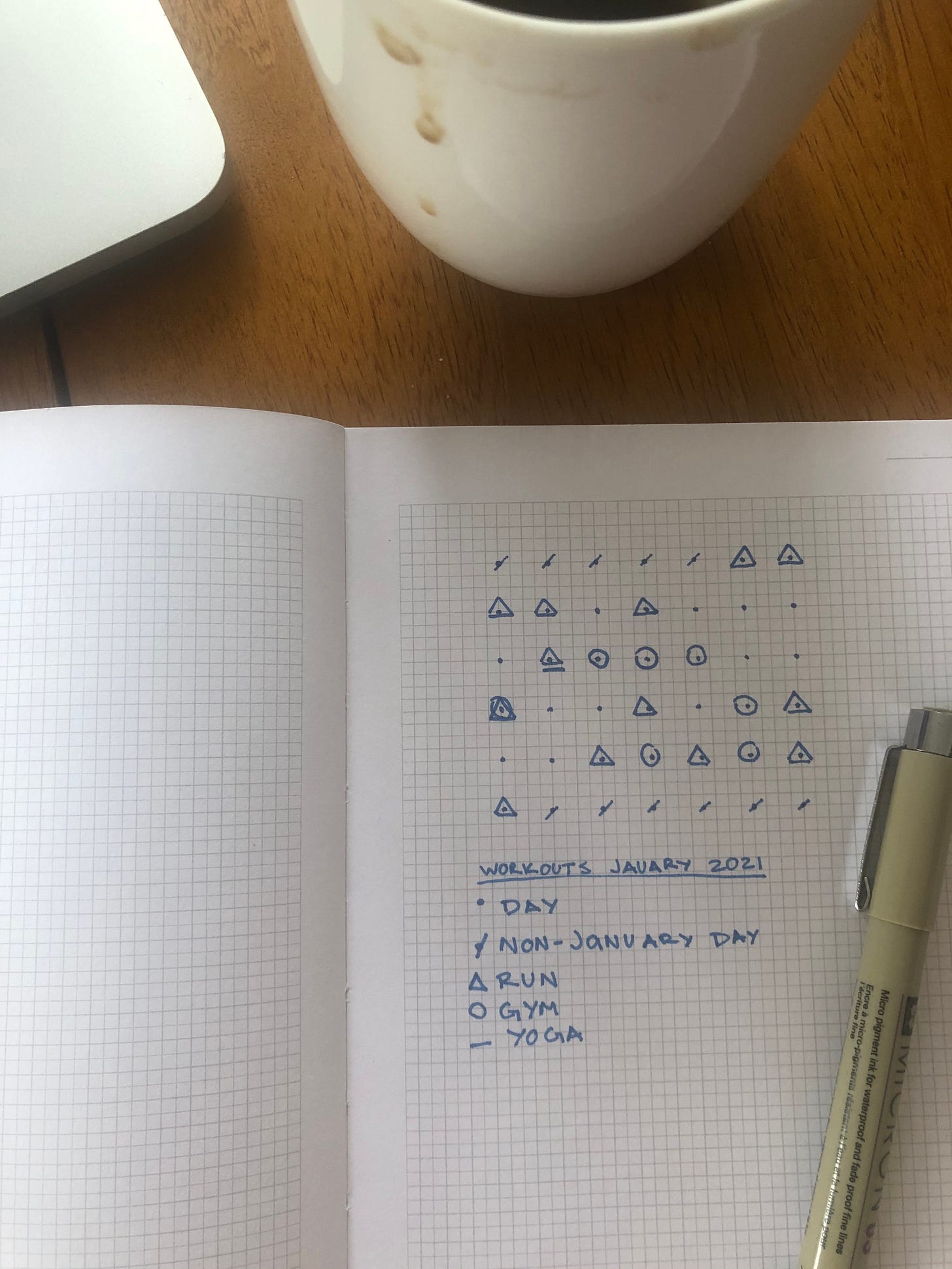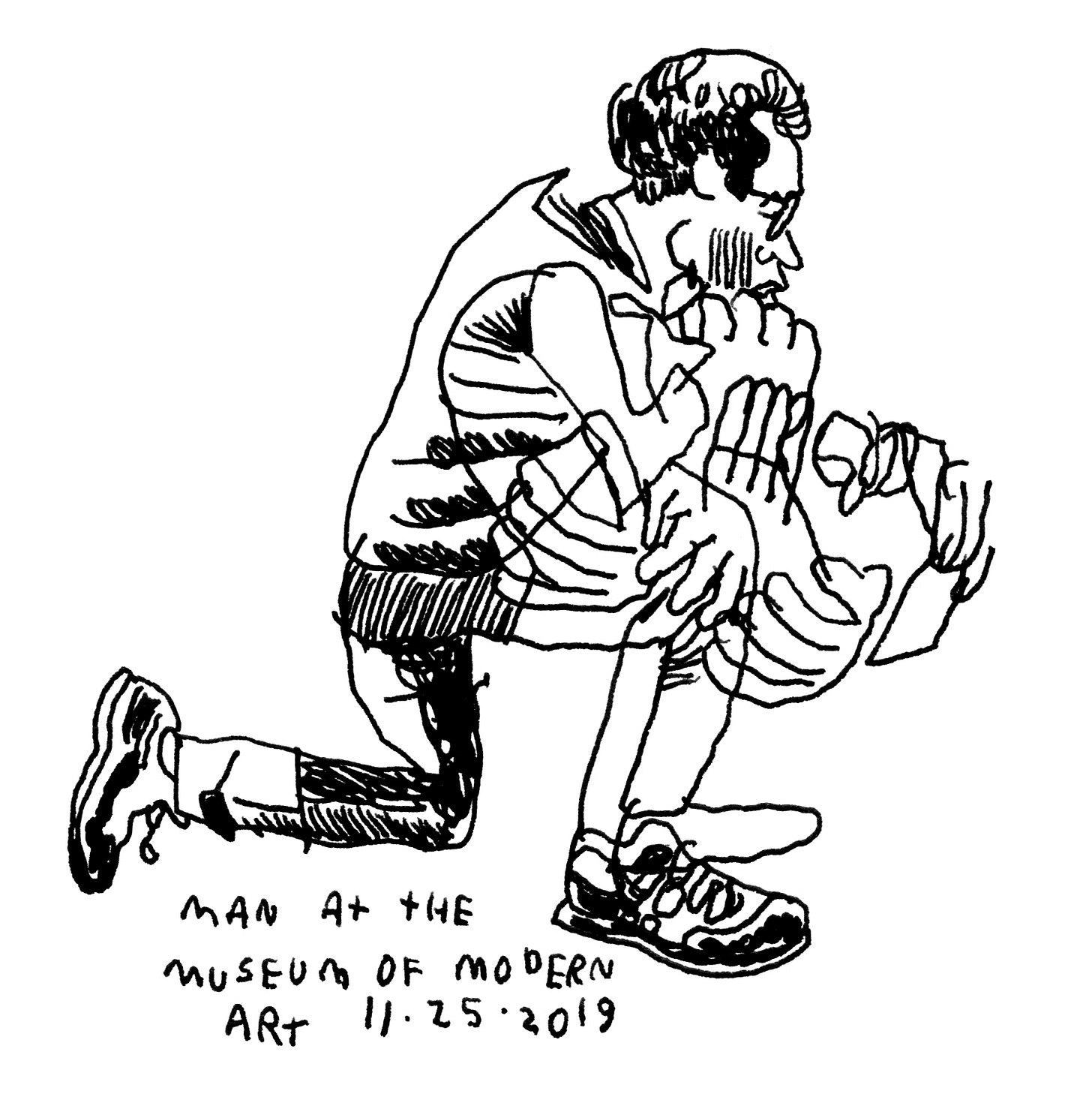The barriers between digital environments and natural spaces are becoming blurrier. So for the purpose of this thread, how do we define inside and outside? Is “Inside” anything powered by technology?
If I’m running on a man-made island/park, tracking my speed for the sake of data keeping, while listening to Denzel Curry and Kenny Beats’ album “UNLOCKED” — I’m I doing an “Outside” activity? And, does the question even matter?
These questions we can (sort-of) answer — but technology is moving at a pace that makes the answers irrelevant as soon as we do. That’s why they are better explained by abstract ideas, and why cross-platform/cross-genre expositions are becoming part of the mainstream.
Like Amazon creating an entire TV Show based on Simon Stålenhag’s digital paintings, which resemble oil paintings.
Or Daniel Arsham creating paintings and sculptures of Zeus and Mewto alike — in Time Dilation.
Again, I mentioned this last time, we are drawing more and more inspiration from digital environments to shape our surroundings - and that includes our physical surroundings, our “Outsides”. They are so entangled now — how do we even tell them apart?
I’m I still making sense? The Inside Outside.
Conscious Correspondence.
[If there’s one link you click this week - make it this one].
Dear Data is an analog project from artists Giorgia Lupi and Stefanie Posavec. They both had experience in the field of data visualization so they decided to chat. Their chat took place through a series of snail-mail postcards going between their residences in New York and London.
These postcards, as all postcards usually do, enclosed data about the sender’s life. But this data was raw, so it needed to include a form of cheat sheet — on how to read the data. The data was also hand-drawn, so it required a high level of creativity for simplification of complex details.
I saw the postcards two weeks ago at the MoMA — as they are now part of the permanent exhibit. An outside activity, I would say.
I was hesitant to include it here, as I want to dive deeper into the realms of cryptography, privacy and conscious communication. But this is a great opportunity to englobe and introduce all these ideas — and more specifically, to do it through analog means.
As our data becomes more public, for the sake of convenience, we have the opportunity to protect it by creating systems in which we are the only operators — a language of our own [and the people we share it with].
There is a way to own your privacy online - and we can draw some inspiration from the blockchain here. You want your information processed, so you have to make it public — but you don’t want it to be interpreted, so you have to make it cryptic.
Take my notes above — that’s my workout consistency for this month. Now, I want to be able to record that, share it, and get recommendations based on it (when I ask for them). But I don’t want it to be used against me. I don’t want Nike telling me I’m going to be able to shave off 30 second off my pace with their shoes or even a “friendly” reminder that I didn’t work out that day.
Does that require each person learning how create their own systems? Will the future of coding have as many languages as it’ll have users?
It’s hard to see it — but we are constrained by the perceptions of our times. That’s why, for now, we can experiment with analog tools.
Even In Death, I’m The Hero.
In the digital world we can think without the constraints of the real world. We can create spaces that don’t obey the laws of nature. That’s why science-fiction is replete of technological developments — it’s our connection to the future. And, in a way, our channel to create such future.
In 2011 (10 years ago, wow!), Google prototyped the first set of Google Glasses. Throughout their bumpy development they have faced wide angles of criticism — they violate privacy agreements, they look weird, but most importantly, they aren’t useful.
The hardware is ok, but the software has no major practicality. 90% of my conversations with Siri and Alexa are about the weather, why would I hire a third assistant for my eyes to have the exact same conversation? Specially when I’m outside already and don’t care for the weather rundown. What else can I use it for?
While software presents a vast opportunity for unconstrained development, the software itself is constrained by the times — and the times are constrained by what we consider to be possible.
Now, science-fiction is a bit more unconstrained. And allows us to see beyond our technological realities. Enter E.D.I.T.H.
E.D.I.T.H. or “Even In Death, I’m The Hero” is one of Tony Stark’s AI systems (the one in his glasses [the ones Peter Parker inherits in Far From Home]).
North, a company with an “optimistic vision for the future in which technology becomes an invisible, helpful part of our everyday experience”, had been parallelly developing their own glass system — Focals.
And in 2019, they received a great deal of mainstream publicity because of how similar they were to E.D.I.T.H.’s. In 2020, they were acquired by Google. And now, we are all playing the waiting game for their re-launch.
——
A video (14m 56s) on Focals, the lab, and how they compare to E.D.I.T.H. [my 11 year old brother showed me this channel].
——
Now, we are in the process of learning what tools we want to “bring outside” we brought the camera, the notepad, the music player, the computer, the phone. Do we want to bring the VR set, the TV (this time more blended with the outside), the calendar (this time more intrusive)?
If it allows us to be Ironman, I think we will.
Fuck Cancer and Long Live Jason Polan.
A year ago, one of my favorite artists died. He had a mission to draw every single person in New York, and a blog to back it up. Fuck Cancer and Long Live Jason Polan.

Paris Fashion Week as a Film Festival.
Quick shoutout to these two (early) PFW films:
Dior Haute Couture Spring-Summer 2021 Collection — it’s beautiful.
KidSuper AW21 "If The Plan Doesn’t Work You’re Insane, If The Plan Works You’re A Genius" — it’s beyond beautiful and it makes me very happy to see the size of these projects. It works because Colm is both insane and a genius.
This is the third of four disambiguations of digital spaces. This is the Inside Outside. Next week → → the Outside Outside.
Feel free to save, print, forward, reply — actually, please do so!
Have a great Sunday!
With Love and Good Times,
Felix Ernesto


